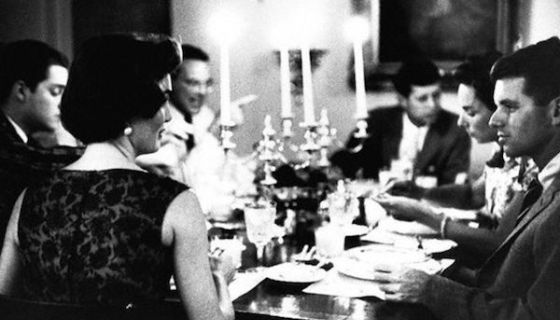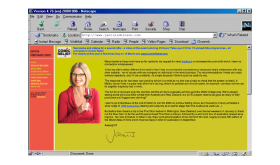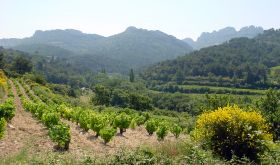Entertaining anxiety: worrying about serving the wrong thing to your guests. I thought I’d look up this condition, also known as guest stress syndrome, online and was amazed to find 37 million results. Clearly this is a common problem.
You might think that wine and food professionals are immune to entertaining anxiety – but you’d be wrong. Only last week I found myself worrying about which of between eight and a dozen different bottles of red to serve.
The problem in this case was that at least three of the invitees have grander wines than we do, and two of them, separately, have inherited particularly venerable cellars. I could not possibly compete with 80-year-old classics, and reckoned that these two lucky owners of ancient bottles probably didn’t come across new producers all that often. So I decided I would serve four pairs of wines: one classic and one new pretender in the same style.
We often serve Riesling instead of something fizzy before a meal because, with its relatively high acidity, it is particularly refreshing and low enough in alcohol to drink without anything more substantial that a few mixed salted nuts. First of all, I served a really delicate Kabinett from the superstar KP Keller in Rheinhessen. At the recent annual wine auction in Germany one of his 2017 Rieslings went for almost a thousand euros a bottle, an unprecedented price for this style of wine. I paid nothing like that for a case of this 2012 Riesling ‘H’ from the famous Hipping vineyard in Nierstein. With just 8.5% alcohol, it has such delicacy and crystalline acidity that it tastes almost bone dry, so it was a fitting precedent for a particularly fine dry Riesling from one of the relatively few parts of the New World that specialises in the grape, the Finger Lakes in upstate New York. Red Newt Cellars Dry Riesling 2015 is much more potent, with just over 13% alcohol, but it tastes uncannily like one of the best dry German Rieslings nowadays labelled Grosses Gewächs, or GG, that have that sort of potency too.
Because one of our guests is mad keen on obscure grape varieties, I felt I needed to feed his curiosity so also opened a bottle of Ch du Retout Blanc 2012. This unusual wine is made in the Médoc from a mix of grape varieties that are not officially sanctioned there, indeed a mix that would be pretty odd anywhere: Gros Manseng of Jurançon, Savagnin of Jura and Mondeuse Blanche that is rare even in its native Savoie. These were blended with the increasingly popular Sauvignon Gris, the pink-skinned cousin of Sauvignon Blanc.
We all took our glasses to the table for a salad of fresh mozzarella, tiny heritage tomatoes and a few shavings of black truffle to double up on our pre-poured glasses of Coche-Dury’s Meursault Rougets 2009. My plan had been to serve a California Chardonnay from the cool Sonoma Coast – made, incidentally, by a Scottish winemaker – DuMOL’s Isobel Chardonnay 2013.
When I tasted it before our friends arrived, I was a bit worried (guest stress syndrome again). I was concerned that the California wine would be dismissed as too blowsy and obvious because it seemed so much richer than the Coche. So I decanted the Coche, as I do often with white burgundies, in order to expose them to lots of air that will loosen them up. I splashed it into a generous magnum decanter and put it in our wine store – which is kept at a regular 13°C – rather than in the fridge. Full-bodied whites served too cold are often wasted, tasting merely wet rather than expressing any nuance.
I was delighted to find that by the time the two Chardonnays were served side by side, the Coche had opened out and the DuMOL had tightened up, so they really were quite a respectable match for each other. California honour was saved.
With the first pair of reds, both made from Pinot Noir and served with a particularly moist partridge on a slice of brioche, I gave up on levelling the playing field. I wanted to continue the Sonoma Coast theme and had planned to serve a 2014 from Steve Kistler’s new personal winery Occidental: his Cuvée Elizabeth from the Bodega Headlands Vineyard, a bright young thing if ever there was one.
Logically, I should have chosen a young red burgundy to serve alongside it, and I picked out three or four candidates from our wine cellar. But most young burgundy is so incommunicative that I quailed and went for a bottle that I knew would already be expressive, from the charming and often underestimated 2002 vintage, a premier cru Chambolle-Musigny, Derrière la Grange (Behind the Barn) from Louis Remy. This particularly good bottle was still beautifully fresh and probably at its peak now, whereas the Occidental clearly has years and years to go.

Remembering our friend with a taste for the exotic, I decided this was the evening I would open a bottle of a celebrated Japanese Merlot, Chateau Mercian’s 2011 Private Reserve Kikyogahara, given to me by fellow Master of Wine Kenichi Ohashi (third from the right in the picture above taken in late October 2018 in Mercian's Merlot vineyard, with fellow MW Jeannie Cho Lee third from the left) . On opening, this wine was extremely tight and I was worried (again) that it would seem too pinched to give any pleasure. It reminded me most of a Cabernet-heavy, right-bank red Bordeaux so I pulled out a bottle of Ch Figeac 2001 St-Émilion to serve alongside it (rejecting the possible candidates from Catalonia, New Zealand and Uruguay that I had lined up). I felt the need to give my guests at least one classic with the cheese course. Would you believe that this disparate pair worked really well? I decanted both and I’m sure it was the extra air that worked its magic on the Japanese wine.
Oxygen and a little warmth are the two most powerful variables for any host when serving wine. They can both hasten the ageing process, but beware: reds that are too warm are dull, so I tend to serve them straight from the cellar unless they are really, really tight.
Pseuds Corner here I come.
POSSIBLE COMPANIONS
Wines from these groups could make interesting comparisons at the dinner table.
Rieslings from Germany, Alsace, Austria, Australia, New York’s Finger Lakes
White burgundy; Chardonnays from Australia, New Zealand, South Africa, California
Red burgundy; Pinot Noirs from Oregon, cool sites in California or Australia, New Zealand
Red bordeaux; Cabernets, Merlots and blends from California, Washington, Bolgheri in Tuscany, Margaret River and Coonawarra in Australia, top South Americans














